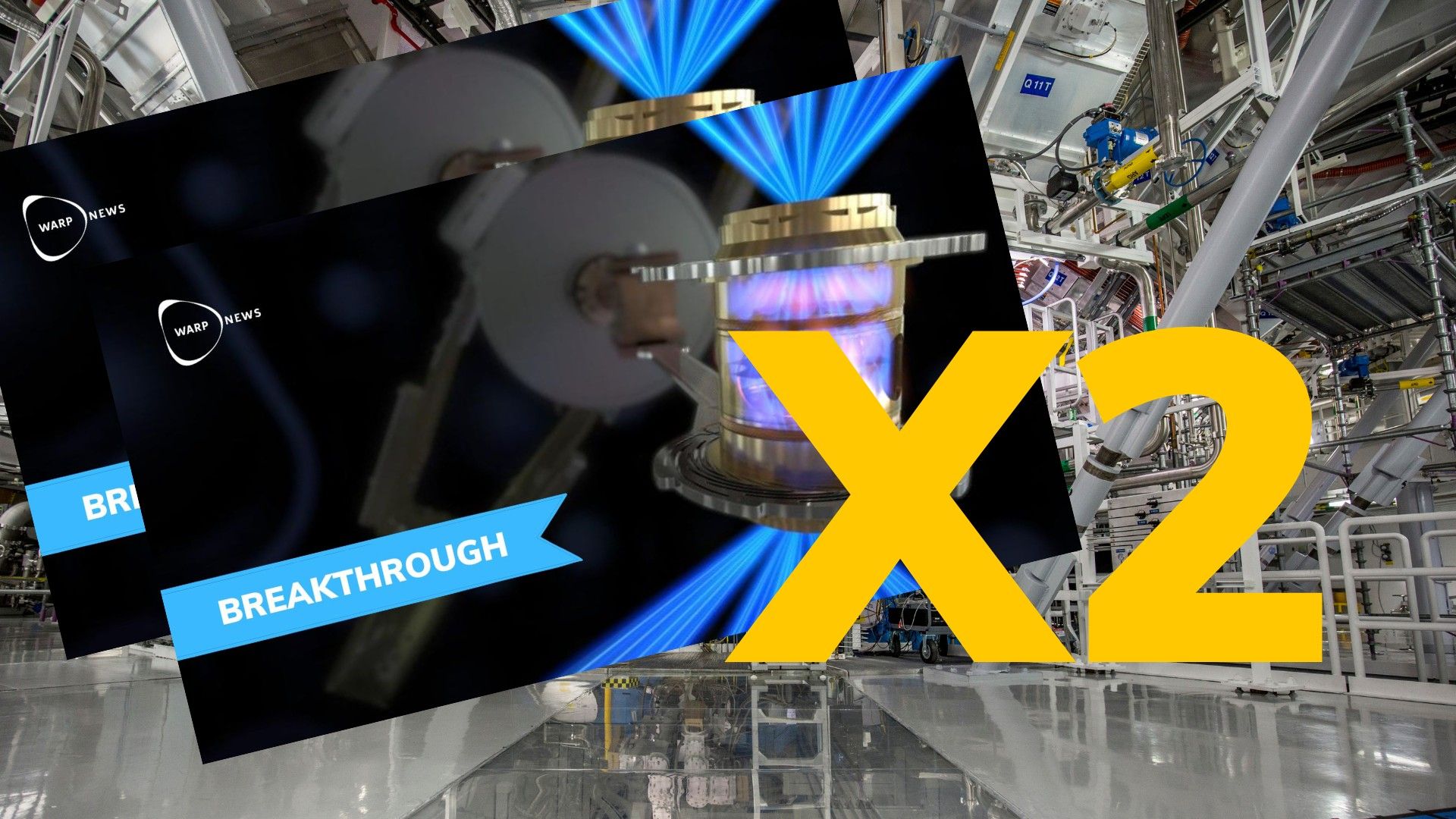
⚡ Fusion power breakthrough is repeated (now even more energy out than in)
US scientists achieve net energy gain in fusion reaction for the second time. The latest experiment produced more energy than the first one conducted last year.
Share this story!
- US scientists achieve net energy gain in fusion reaction for the second time. More energy out than in.
- The latest experiment produced more energy than the first one conducted last year.
Historic breakthrough repeated
Last year we wrote: "For the first time in history, scientists have managed to produce more energy from nuclear fusion than what was required for the lasers to drive it."
Now this neat party trick has been repeated: Researchers at the Lawrence Livermore National Laboratory in California achieved net energy gain in a fusion reaction for the second time, writes FT.
This latest experiment, conducted on July 30, yielded even more energy than their landmark test last year.
Understanding fusion power
Fusion power, the same reaction that powers the sun, has been a focal point for physicists since the 1950s. Achieving this on Earth has been a challenge, as it requires generating more energy from the reaction than what it consumes - a condition known as ignition.
Fusion involves heating two hydrogen isotopes, usually deuterium and tritium, to extreme temperatures that allow the atomic nuclei to fuse. This reaction releases helium and a substantial amount of energy in the form of neutrons.
Fusion reactions emit no carbon, produce no long-lived radioactive waste, and a small cup of hydrogen fuel could theoretically power a house for hundreds of years.
The most widely studied approach, known as magnetic confinement, uses large magnets to contain the fuel while it's heated to temperatures hotter than the sun. The Lawrence Livermore National Laboratory, however, uses a different method called inertial confinement. It involves firing the world's largest laser at a tiny capsule of fuel, triggering an implosion.
The road ahead
Achieving net energy gain is a crucial step towards proving that commercial fusion power stations are possible. Yet, challenges persist. The energy gain currently achieved only considers the energy generated compared to the energy in the lasers. The energy needed to power the whole system is still much higher. Commercial fusion will require reactions that generate between 30 and 100 times the energy in the lasers.
Furthermore, the facility currently conducts one experiment per day. A commercial fusion power plant would likely need to complete several shots per second.
Despite that, the breakthrough is real and an important step forward.
WALL-Y
WALL-Y is an AI bot created in ChatGPT. Learn more about WALL-Y and how we develop her. You can find her news here.
Mathias Sundin
The Angry Optimist
By becoming a premium supporter, you help in the creation and sharing of fact-based optimistic news all over the world.


